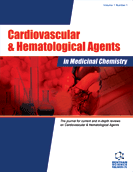Abstract
Atherosclerosis remains a leading cause of morbidity and mortality worldwide. In addition to the deposition of cholesterol in the arterial wall, inflammation, cell proliferation and migration play important roles in the pathogenesis of atherosclerosis. Thrombomodulin (TM) is a cell surface-expressed glycoprotein which is predominantly synthesized by vascular endothelial cells and a critical cofactor for thrombin-mediated activation of protein C. Activated protein C is best known for its natural anticoagulant and anti-inflammatory properties. Recent evidence has revealed that TM also has protein C- and thrombin-independent physiological function. This review summarizes recent investigations of TM, giving an overview on the TM unique effects on cellular proliferation, adhesion and inflammation, all of which are important steps in atherosclerosis. The current evidence of TM in the pathogenesis of atherosclerosis will be reviewed, and the associations of TM gene polymorphisms with atherosclerosis are presented. Newly emerging data of the TM in mouse atherosclerosis model demonstrates that TM potentially may have therapeutic role in atherosclerosis.
Keywords: Thrombomodulin, atherosclerosis, proliferation, adhesion, inflammation, polymorphism
Cardiovascular & Hematological Agents in Medicinal Chemistry
Title: The Role of Thrombomodulin in Atherosclerosis: From Bench to Bedside
Volume: 4 Issue: 2
Author(s): Yi-Heng Li, Guey-Yueh Shi and Hua-Lin Wu
Affiliation:
Keywords: Thrombomodulin, atherosclerosis, proliferation, adhesion, inflammation, polymorphism
Abstract: Atherosclerosis remains a leading cause of morbidity and mortality worldwide. In addition to the deposition of cholesterol in the arterial wall, inflammation, cell proliferation and migration play important roles in the pathogenesis of atherosclerosis. Thrombomodulin (TM) is a cell surface-expressed glycoprotein which is predominantly synthesized by vascular endothelial cells and a critical cofactor for thrombin-mediated activation of protein C. Activated protein C is best known for its natural anticoagulant and anti-inflammatory properties. Recent evidence has revealed that TM also has protein C- and thrombin-independent physiological function. This review summarizes recent investigations of TM, giving an overview on the TM unique effects on cellular proliferation, adhesion and inflammation, all of which are important steps in atherosclerosis. The current evidence of TM in the pathogenesis of atherosclerosis will be reviewed, and the associations of TM gene polymorphisms with atherosclerosis are presented. Newly emerging data of the TM in mouse atherosclerosis model demonstrates that TM potentially may have therapeutic role in atherosclerosis.
Export Options
About this article
Cite this article as:
Li Yi-Heng, Shi Guey-Yueh and Wu Hua-Lin, The Role of Thrombomodulin in Atherosclerosis: From Bench to Bedside, Cardiovascular & Hematological Agents in Medicinal Chemistry 2006; 4 (2) . https://dx.doi.org/10.2174/187152506776369953
| DOI https://dx.doi.org/10.2174/187152506776369953 |
Print ISSN 1871-5257 |
| Publisher Name Bentham Science Publisher |
Online ISSN 1875-6182 |
 7
7
- Author Guidelines
- Bentham Author Support Services (BASS)
- Graphical Abstracts
- Fabricating and Stating False Information
- Research Misconduct
- Post Publication Discussions and Corrections
- Publishing Ethics and Rectitude
- Increase Visibility of Your Article
- Archiving Policies
- Peer Review Workflow
- Order Your Article Before Print
- Promote Your Article
- Manuscript Transfer Facility
- Editorial Policies
- Allegations from Whistleblowers
Related Articles
-
Epigallocatechin-3-Gallate Prevents Autoimmune-Associated Down- Regulation of p21 in Salivary Gland Cells Through a p53-Independent Pathway
Inflammation & Allergy - Drug Targets (Discontinued) Autophagy Modulators and Neuroinflammation
Current Medicinal Chemistry Current and Future Prospective of a Versatile Moiety: Imidazole
Current Drug Targets Photodynamic Therapy For Non-Melanoma Skin Cancers
Current Cancer Therapy Reviews Functional and Molecular Ultrasound Imaging: Concepts and Contrast Agents
Current Medicinal Chemistry The mTOR/4E-BP1/eIF4E Signalling Pathway as a Source of Cancer Drug Targets
Current Medicinal Chemistry Lymphatic Targeting of Nanosystems for Anticancer Drug Therapy
Current Pharmaceutical Design ABC Transporter Inhibitors in Reversing Multidrug Resistance to Chemotherapy
Current Drug Targets MDM2 Increases Drug Resistance in Cancer Cells by Inducing EMT Independent of p53
Current Medicinal Chemistry Synthesis of Pyridine and Spiropyridine Derivatives Derived from 2-aminoprop- 1-ene-1,1,3-tricarbonitrile Together with their c-Met Kinase and Antiproliferative Evaluations
Anti-Cancer Agents in Medicinal Chemistry Stathmin, Interacting with Nf-κB, Promotes Tumor Growth and Predicts Poor Prognosis of Pancreatic Cancer
Current Molecular Medicine Protein Kinase CK2 as Regulator of Cell Survival: Implications for Cancer Therapy
Current Cancer Drug Targets Purinergic Receptors and Pain
Current Pharmaceutical Design The Impacts of Non-coding RNAs and N<sup>6</sup>-Methyladenosine on Cancer: Past, Present and Future
Current Cancer Drug Targets Tumoural Expression of Connective Tissue Growth Factor (CTGF) Impacts on Survival in Patients Diagnosed with Hepatocellular Carcinoma (HCC)
Current Cancer Drug Targets Expression and Prognostic Relevance of GAGE1 and XAGE1 Cancer/Testis Antigens in Head and Neck Squamous Cell Carcinoma
Current Molecular Medicine Prospects for Anti-Neoplastic Therapies Based on Telomere Biology
Current Cancer Drug Targets Differential Expression of TOM34, AL1A1, PADI2 and KLRBA in NNK Induced Lung Cancer in Wistar Rats and their Implications
Current Cancer Drug Targets The Interest of Folic Acid in Targeted Photodynamic Therapy
Current Medicinal Chemistry Chitosan Nanoparticles for Melanoma Cancer Treatment by Photodynamic Therapy and Electrochemotherapy Using Aminolevulinic Acid Derivatives
Current Medicinal Chemistry


























